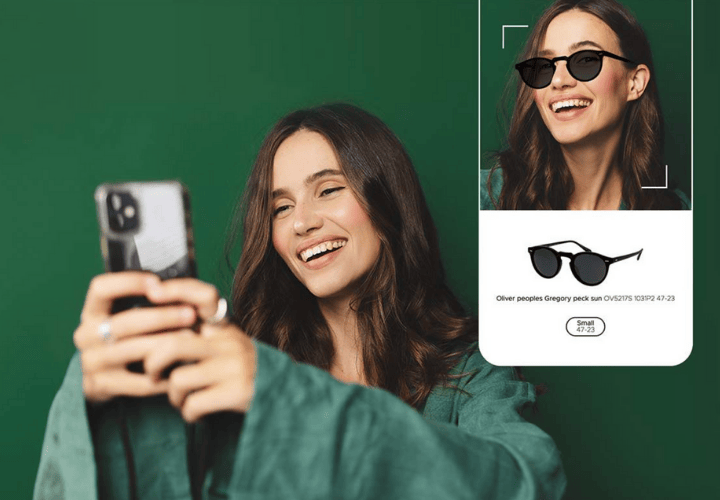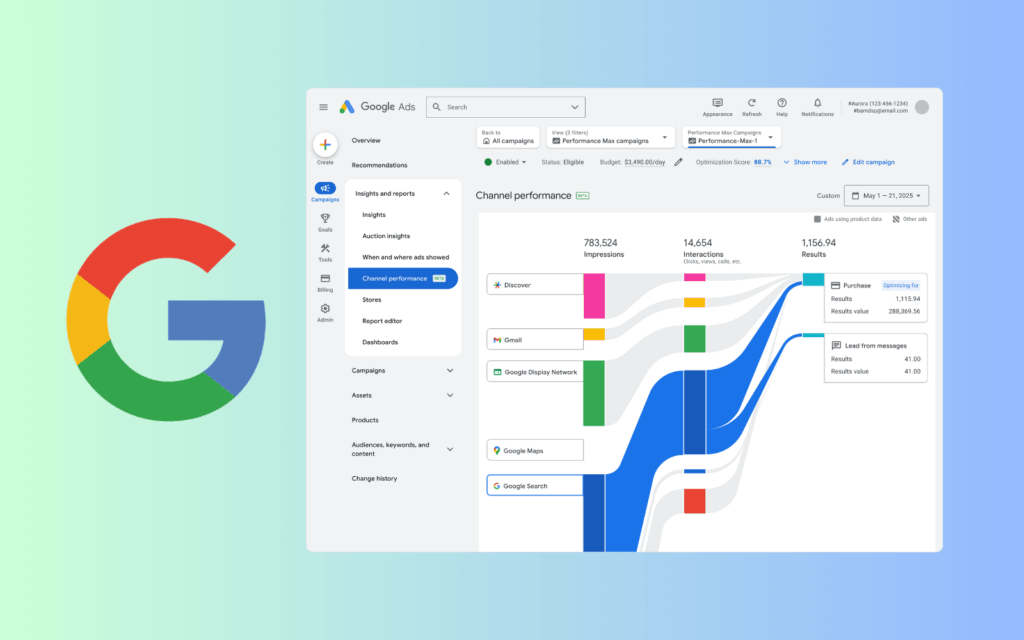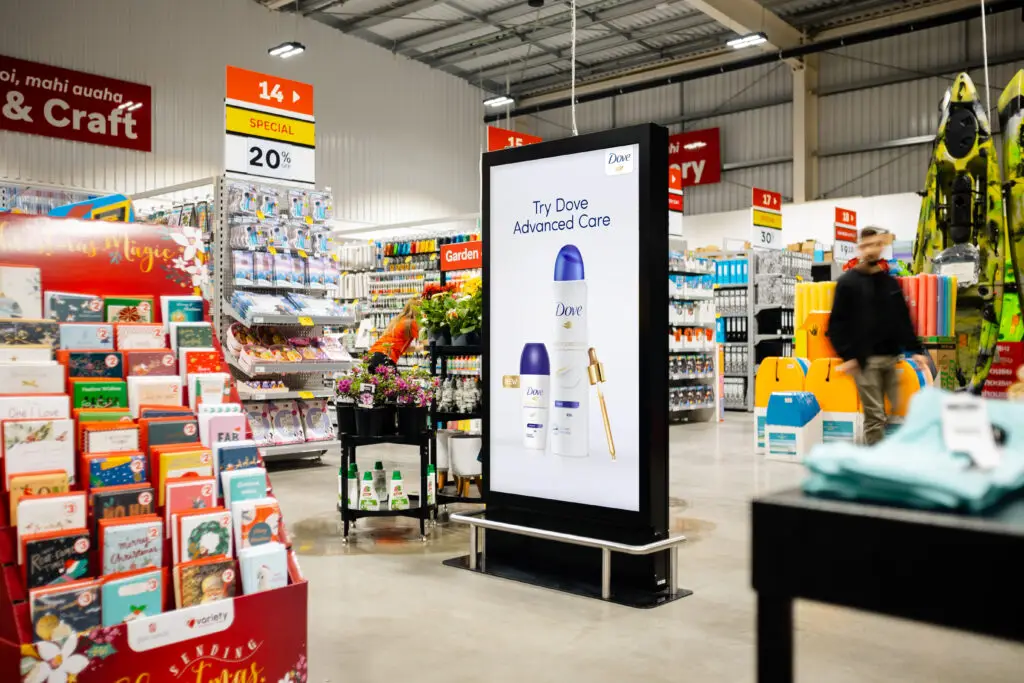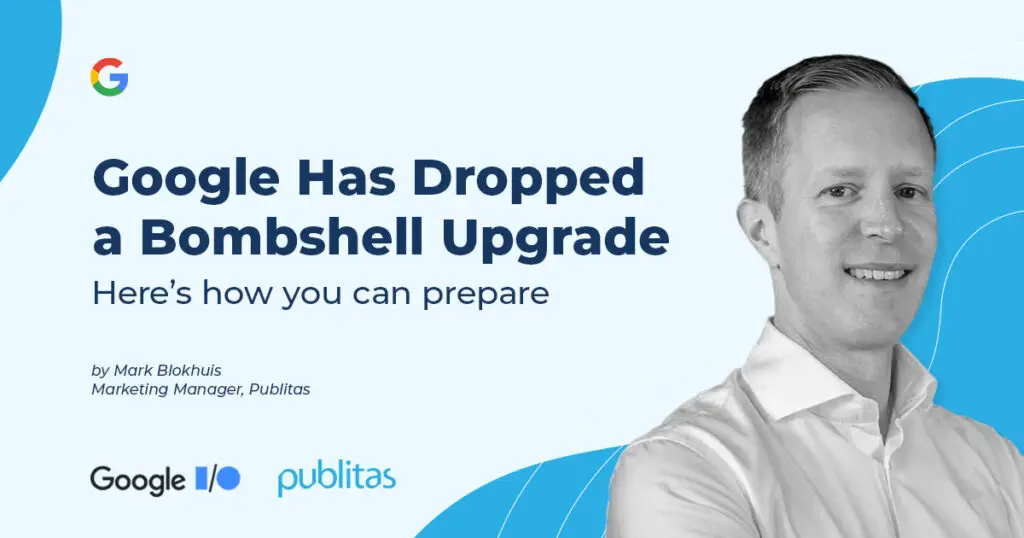At Google I/O 2025, a bombshell Google update reshaped the future of digital marketing, particularly in how shopping and search experiences now converge through AI. One standout evolution is the integration of virtual try-ons directly in search results, allowing users to visualize products like sunglasses or apparel without ever leaving Google. Coupled with this is the ability to purchase items directly within Google’s interface, turning the search engine into a fully-fledged e-commerce destination. These updates signal Google’s intention to reduce reliance on third-party sites by keeping users within its ecosystem (from discovery to purchase), offering brands new visibility and competition. We asked Marketing Manager Mark Blokhuis about the update and what it signals for retailers.
Each year, Google I/O offers a glimpse into the future for developers, marketers, retailers, and every business trying to stay relevant in a world where customer behavior is evolving faster than marketing teams can update their playbooks.
This year’s I/O didn’t just promise change; it delivered a clear message: Google’s marketing ecosystem is no longer just about placement and reach. It’s about performance, prediction, and personalization, powered by AI.
Google Is No Longer Just a Channel. It’s Becoming the Store.
We’re witnessing the transformation of Google from a search engine into a commerce engine. Shoppers can now try on sunglasses right in the search results and buy them…without ever leaving Google. You no longer need to bounce between ten websites when you search for “pink size six high-top sneakers.” The product, the price, and the option to purchase are presented in one seamless step.
And this is by design. Google’s strategy is to reduce friction to zero and become the front door for every retail transaction, while keeping shoppers within its walled garden.

What This Google Update Means for Retailers
If your product catalog isn’t dynamic, discoverable, and highly detailed, you’re already behind. The days of static PDFs and unstructured product data are numbered. Google’s AI-powered results draw from rich product feeds with accurate titles, descriptions, images, and – critically – context. Retailers who can’t supply that data won’t show up.
This doesn’t mean your content needs to be prettier. It needs to be smarter. Google’s AI interprets need and intent. If a user searches “how to stop a beach umbrella from falling over,” and you sell a sand anchor (but don’t describe it as such) you won’t be found. The AI won’t connect the dots for you unless you’ve trained it with the right signals.
Discovery Has Changed. Have You?
One of the biggest mindset shifts is how and where discovery happens. It’s not just on Google.com. It’s in Gmail, YouTube Shorts, voice assistants, smart home devices, and even through visual search like “Circle to Search.”
The omni-channel strategy must now account for omni-presence. Your product might be discovered in a video, a podcast, or a multimodal search where an image is as important as a headline. Google is leaning into this with new support for content creators to feature and promote your products within YouTube. Retailers who embrace video, especially on YouTube, will benefit from native visibility and greater campaign attribution.
Performance Max Just Got Smarter
Google’s Performance Max campaigns (long seen as a black box) are becoming more transparent and intelligent. You’ll now gain more insight into how shoppers move between display, search, email or video ads to purchase. While Google still wants your trust (“give us your assets, we’ll do the rest”), it’s finally offering advertisers more visibility into what’s working and the route from discovery to purchase.
Add to that the upcoming customer lifetime value (CLV) framework, and you begin to see Google’s real goal: not just driving conversions, but helping brands optimize acquisition around long-term ROI.

What To Do Next: A Retail Marketing Checklist
Get your product feed in shape.
Your product feed is now your front-line sales tool and increasingly the foundation of visibility in AI-enhanced search results. It’s no longer enough to list a title and a price. Every product needs a rich, accurate description, complete with context-based use cases, dimensions, and variants. Think like a customer (and an algorithm): if someone is searching for “a secure dog carrier for air travel,” will your listing include enough detail to qualify? High-quality metadata, such as sizing, colors, compatible uses, and even customer Q&A, can determine whether your product is surfaced or sidelined in Google’s ecosystem.
Invest in visual content.
Multimodal search is changing the game. Consumers expect to see results as much as read them. Visual-first features like “Circle to Search” and virtual try-ons mean that distinct, high-quality imagery is essential. Go beyond studio photos. Include lifestyle shots, comparison views, and product videos. Google is prioritizing video-heavy formats like YouTube Shorts, and using thumbnails from these to enhance product ads. By aligning your content to these formats, you improve your visibility and boost conversion by showing how products work in real life.
Embrace dynamic catalogs.
Static PDFs are quickly becoming obsolete. Modern digital catalogs should be responsive, modular, and data-connected, automatically pulling in updated pricing, availability, and product metadata in real time. This not only helps you stay relevant in fast-moving retail environments but also improves your discoverability across platforms, especially as Google increasingly favors structured, dynamic content that can plug directly into its AI answers and commerce layers. A living catalog is no longer a nice-to-have. It’s foundational to performance marketing.
Understand your buyer.
Digital-only shoppers behave differently from those who toggle between online research and in-store pickup. AI systems are getting better at personalizing based on user behavior; your job is to feed them the right signals. Build customer profiles that reflect purchase history, intent, behavior, and lifetime value. Then tailor messaging, promotions, and creative accordingly to meet buyers where they are and where they’re headed.
Think beyond traditional devices
Phones (and other devices) will become even more powerful shopping tools in 2026. If you haven’t (at a minimum), optimized your catalog for mobile – do it now. We are already seeing retail front-runners adapting to a world beyond screens. Shoppers now interact via AI agents, smart speakers, voice assistants, wearables, and even smart fridges. Discovery happens through video unboxings, social micro-influencers, or in a YouTube Short served up by an algorithmic hunch. The most successful brands won’t just optimize for mobile – they’ll create for every mode of engagement, from voice to visual to virtual. To win attention, marketers must treat every device, every moment, and every medium as a potential point of entry into the shopping journey.

Final Thoughts
Google I/O 2025 reminded us that marketing fundamentals still matter – good data, good content, and good strategy. But the battlefield has shifted. The marketer’s job is no longer to simply be present in search. It’s to be contextually relevant wherever the customer might begin their journey.
Google is giving us powerful new tools. But just like AI itself, their value depends on the quality of what we feed them.
The future of marketing isn’t just data-driven. It’s intent-driven.
About Mark

Mark Blokhuis is a seasoned marketeer with over a decade of experience in the performance marketing field. Currently working on the marketing team at Publitas.com, he plays a pivotal role in defining successful strategies to succeed in a digital-first landscape.


